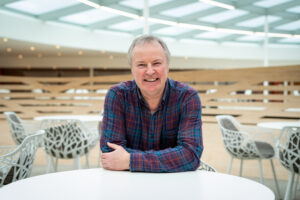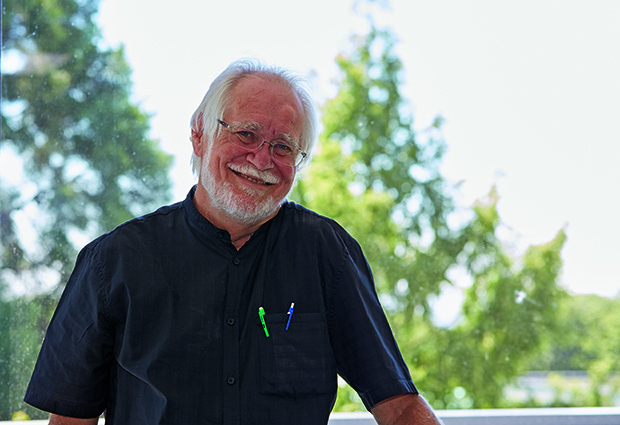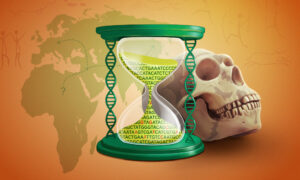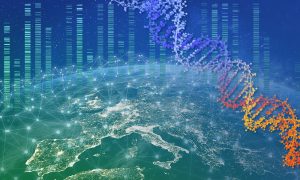
Jacques Dubochet awarded Nobel Prize for chemistry
EMBL alumnus Jacques Dubochet recognised for cryo-electron microscopy work carried out at EMBL

EMBL alumnus Jacques Dubochet has been named as a co-recipient of the 2017 Nobel Prize in Chemistry for developing cryo-electron microscopy to determine the structure of the molecular building blocks of life in high resolution.
Working as a group leader at EMBL Heidelberg in the 1980s, Dubochet, together with colleagues, developed a method to freeze thin layers of solutions of enzymes or viruses without forming ice crystals – a technique known as vitrification. The team then studied these layers in an electron microscope, a development that simplified the process of visualising biomolecules in solution. It was the birth of cryo-electron microscopy, one of the cornerstones of modern structural biology.
“Jacques developed a technique that has had a tremendous impact on our ability to determine the structure of molecules and understand their function,” explains Iain Mattaj, EMBL Director General. “As one of the inventors of cryo-electron microscopy sample preparation, it is fitting that his huge contributions to research and technology innovation have been recognised by the Nobel committee.”
Dubochet and his teams have also developed important methods that built on his invention, including a technique that enables the cutting of vitreous sections of high-pressure frozen tissue that allows the insides of cells to be imaged. Today, cryo-EM is a method that EMBL makes available to scientists around the world. Thanks to a new Imaging Technology Centre, set to be constructed at EMBL at its site in Heidelberg, Germany, for external users, even more scientists will soon have access to this and other cutting-edge imaging technologies.
Dubochet joins a list of 177 Chemistry Nobel laureates who have been recognised since 1901.
Jacques Dubochet: Science, society and serendipity
In this 2015 interview for EMBLetc. magazine, EMBL alumnus and new Nobel laureate Jacques Dubochet explains the secrets behind cryo-EM sample preparation
As a child, alumnus Jacques Dubochet was scared of the dark. One day, nervously watching the sun disappearing over the horizon, he headed to his local library determined to find out where it went.
“For me it was necessary to confront my fears with understanding,” explains Dubochet, winner of the inaugural Lennart Philipson award. Taking comfort in knowledge instinctively led him to a career in science, where his defining work came not from studying disappearing light, but disappearing water, developing a technique that revolutionised structural biology.
Friend not foe
“Unfortunately water evaporates in an electron microscope, but when treated with suitable care, water is the electron microscopist’s best friend,” says Dubochet, who together with colleague Alasdair McDowall and Marc Adrian, invented cryo-electron microscopy (cryo-EM) sample preparation. The method enabled samples to be kept in their native state without the need for dyes or fixatives: its development over time has enabled researchers to zoom in on structures, viruses and protein complexes at unprecedented resolution. “Electrons are great: even a single molecule may leave a trace in their beam and electron microscopists have learned to make use of them with breathtaking effect,” he explains. “But they are also rather destructive: the column of an electron microscope must be under a vacuum, while risks of structural damage lurk around every corner.”
For me it was necessary to confront my fears with understanding.
Scientists, including Dubochet, had already tinkered with a variety of methods to try and fix biological samples for observations in the electron microscope, but working as a group leader at EMBL Heidelberg in the early 1980s, Dubochet recognised that in order to preserve the natural structure of biological samples for measurement under the electron microscope, they had to remain in their natural environment – water. But to avoid evaporation in the vacuum of the electron microscope column, water needs to be frozen, with ice crystals causing further hazards to delicate samples. So Dubochet set out to find a way of freezing water without producing any ice crystals.
Visionary
“Jacques had a vision,” explains Gareth Griffiths, incumbent Chair of EMBL’s Alumni Association, as well as a friend and colleague. “He found a way of freezing thin films of water so fast that crystals had no time to form. At first the idea of “vitrification” of liquid ice was dismissed, but over time the technique has become increasingly important to life science research, and it is clear today it is Nobel Prize-worthy.” While other structural biology methods require extensive, complicated and potentially disruptive sample preparation techniques, cryo-electron microscopy enables the scientist to view the sample in its natural environment. It is central to the work of labs the world over, including several at EMBL, while cryo-EM of vitreous sections (CEMOVIS), is widely regarded as having potential to become a powerful method in the future. “With a bit of chance it’s going to be trivial to see the atomic structure of protein complexes!” Dubochet says excitedly.
After leaving EMBL, Dubochet took up a professorship at the University of Lausanne, fulfilling a passion for teaching, while also introducing courses on ethics and philosophy – an area he is still very active in. “With knowledge comes great responsibility,” he says. Now retired, he looks back with a smile at all he has achieved and experienced. “I have been lucky,” he adds. “Although ‘serendipity’ probably captures it better, being in the right place at the right time. EMBL was the best time of my life: my children were born, I had my best scientific moments and still have plenty of friends here. We often come back to visit, it’s a great pleasure. Voilà!”


